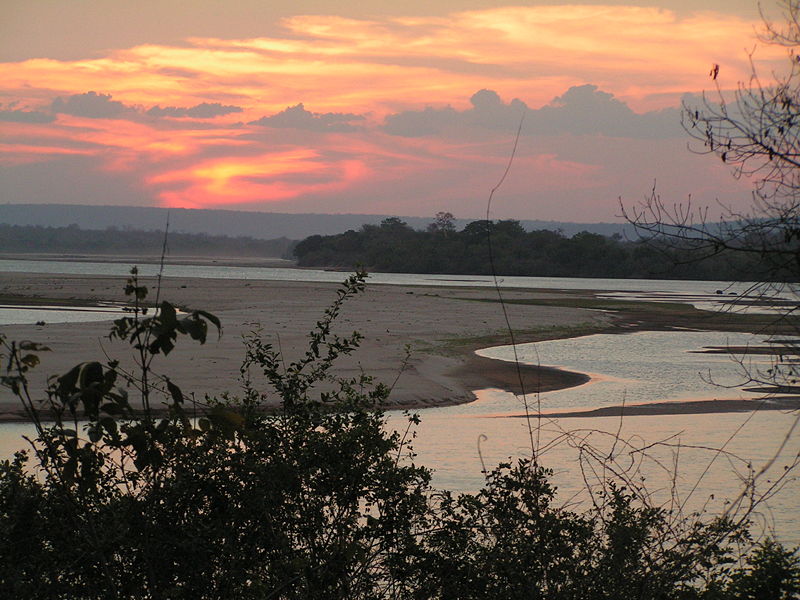Facts for Kids
Nyerere National Park is a protected wildlife area in southern Tanzania, known for its diverse animals and beautiful landscapes, established to preserve nature and support wildlife habitats.
Overview
Cultural Heritage
Conservation Efforts
Research And Education
Threats To The Reserve
Ecological Significance
Biodiversity And Wildlife
UNESCO World Heritage Status
History Of Selous Game Reserve
Tourism And Visitor Experience

Inside this Article
World Heritage Site
African Fish Eagle
Climate Change
Biodiversity
East Africa
The Animals
Woodlands
Tanzania
Conflict
Park
Did you know?
🦁 Nyerere National Park, formerly known as Selous Game Reserve, is one of Africa's largest protected parks.
🌍 The park was established in 1896 and was named after explorer Frederick Selous.
🐘 It is home to over 1,000 different animal species, including elephants and lions.
🎉 Nyerere National Park became a UNESCO World Heritage site in 1979, underlining its environmental importance.
🌊 The park features diverse habitats like grasslands, woodlands, and wetlands, which help many animals thrive.
🏞️ Visitors can enjoy exciting safaris, jeep rides, and guided walking tours to see animals up close.
✨ Thousands of tourists visit each year, creating wonderful memories while exploring the wild.
🚫 Poaching and habitat loss are major threats to the park's wildlife.
🌱 Local tribes like the Sukuma and Zaramo have deep cultural ties to the land and its creatures.
🌿 Scientists study the park's ecosystems to understand animal behavior and climate change impact.
Introduction
It covers about 30,893 square kilometers, making it one of Africa's largest protected parks. You can find many animals here, like elephants, lions, and hippos. The park is named after Frederick Selous, a famous explorer. It was established in 1896! Nyerere National Park is known for its beautiful landscapes, including rivers, lakes, and forests. It's a special place that helps animals stay safe while showing visitors the wonder of nature. 🌍🐘
Cultural Heritage
Local tribes, like the Sukuma and the Zaramo, have lived in the area for generations. They have a deep connection to the land and its creatures. These tribes share stories, music, and art that celebrate their history and nature. Many traditions reflect how they honor the environment, like hunting rituals or folk tales. By learning about these cultures, we understand even more about the beautiful balance between people and wildlife in Tanzania! 🎶❤️
Conservation Efforts
Park rangers patrol the area to prevent poaching and to ensure animals are safe. They also help educate local communities about the importance of conservation. Many organizations support anti-poaching programs, helping to monitor animal populations and their habitats. There are also efforts to reduce human-wildlife conflict, so both people and animals can live together peacefully. Every small action helps protect the amazing creatures that call this park home! 🌿❤️
Research And Education
Researchers come from all over the world to learn about the park's biodiversity. They gather information on animal behavior, population numbers, and the effects of climate change. Education programs also help local communities understand the importance of protecting nature. By sharing this knowledge, everyone becomes a part of conservation efforts! 🏫👩🔬 Children visiting the park can learn about wildlife through fun activities and guided experiences, so they grow up as nature's protectors! 🌱
Threats To The Reserve
Poaching is when people illegally hunt animals for their tusks, horns, or skins. This hurts populations of elephants and rhinos. Another threat is habitat loss, which happens when land is cleared for farming or cities. Deforestation can destroy animal homes. Climate change is also a big problem, changing weather patterns and affecting food and water sources. It's very important for everyone to help protect the park, so the animals can keep thriving for generations to come! 🚫🐾
Ecological Significance
It provides a home for many animals and helps keep ecosystems balanced. The park's rivers and wetlands support fish, birds, and other wildlife, creating a healthy habitat. Plants in the park clean the air and provide food for animals. The diverse species found here are essential for maintaining biodiversity, which is important for our planet’s health! 🌏
Protecting Nyerere National Park helps ensure that these incredible ecosystems continue to thrive, supporting both wildlife and people for many years to come! 🦜🌻
Biodiversity And Wildlife
It has one of the largest populations of elephants in Africa! You can also spot lions, wild dogs, and more than 400 bird species. 🦩
The park's rivers and lakes are filled with hippos and crocodiles. The mix of habitats, including grasslands, woodlands, and wetlands, helps many animals thrive. If you visit, keep your eyes open you might see a leopard climbing a tree or a herd of zebras drinking from the river! 🌊
Unesco World Heritage Status
This means it's recognized as a unique and precious place that needs protecting. People from around the world celebrate this status because it helps raise awareness about conservation. UNESCO sites are important for both natural beauty and cultural significance. This recognition encourages nations to take care of these areas and helps attract visitors who want to learn about and experience the extraordinary wildlife. Being on this special list means the park receives extra support for its conservation efforts! 🌎
History Of Selous Game Reserve
Tourism And Visitor Experience
You can go on safaris to see animals up close. Many people come in jeeps or take boat rides on the Rufiji River to spot elephants and crocodiles. There are also guided walking tours for brave adventurers who want to explore on foot! 🏞
️ Camping under the stars lets visitors feel the magic of nature. Birdwatchers can enjoy seeing hundreds of colorful birds, like the African Fish Eagle. Each year, thousands of tourists come to experience this spectacular park, making wonderful memories and exploring the wild! 🌟

